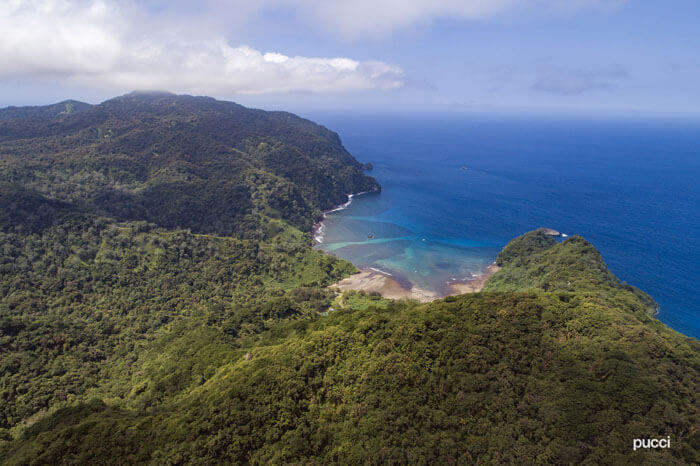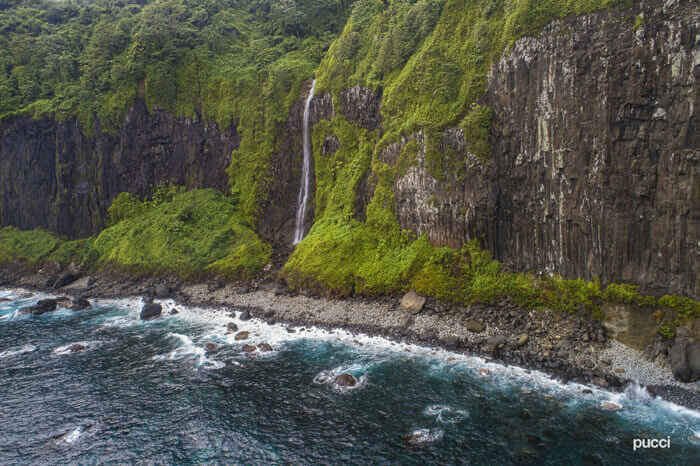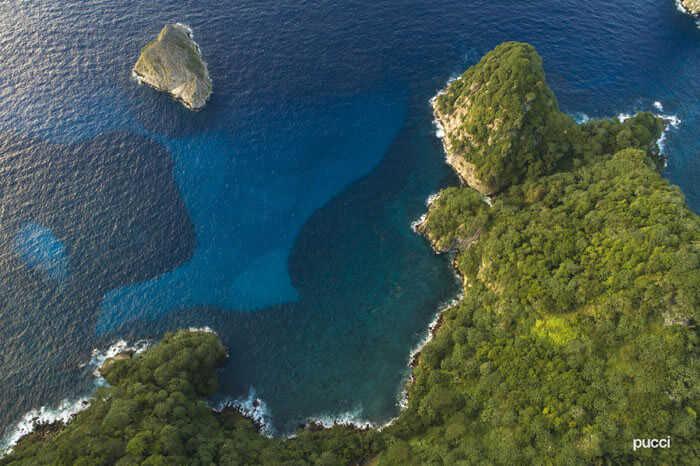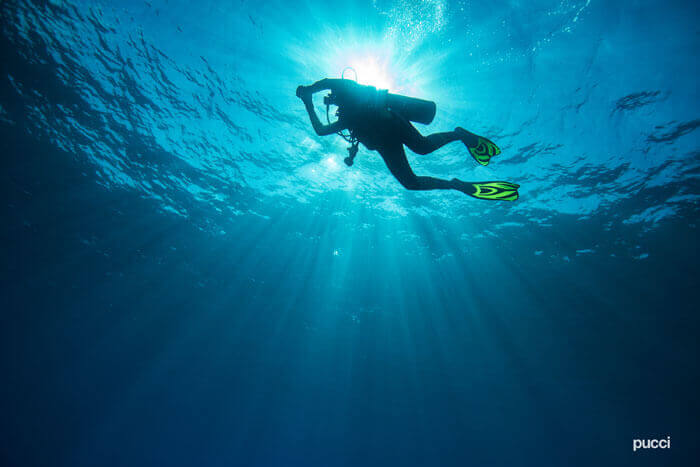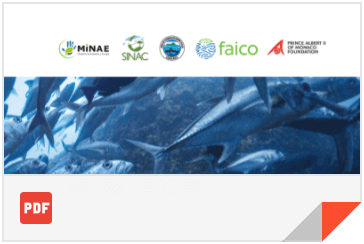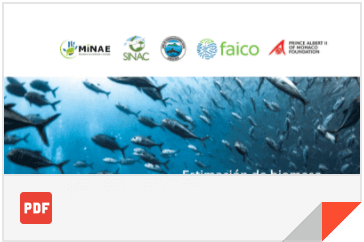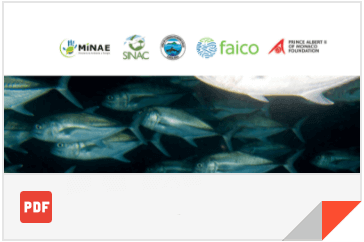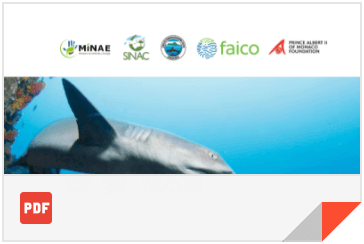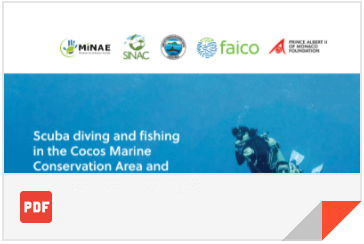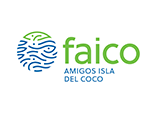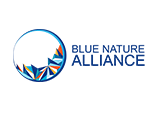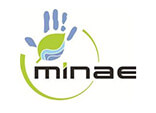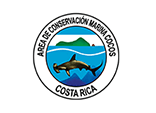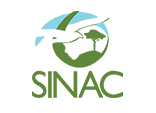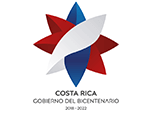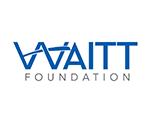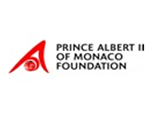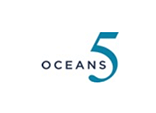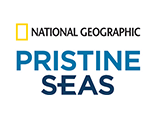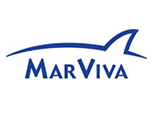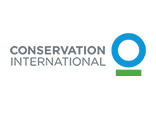Technical-scientific, social, financial, and legal feasibility of possible changes and/or modifications of the marine protected areas of the Cocos Marine Conservation Area
2021 represented a historic year for Costa Rica in the conservation and protection of the unique wealth of Cocos Island and its surrounding waters, after a five-year process, the marine protected areas (MPAs) of the Cocos Marine Conservation Area (ACMC) were expanded and modified. Cocos Island National Park passed from 2,034 km2 to cover 54,844 km2 of absolute protection (27 times larger). In addition, the new Bicentennial Marine Management Area (AMM B), consisting of 106,285 km2 of mixed use, was created. In total, the ACMC passed from 11,683 km2 to 159,294km2, an area that represents more than 3 times the size of continental Costa Rica and 31% of the Exclusive Economic Zone (EEZ) of the Pacific.
For the execution of this process, four main stages are contemplated:
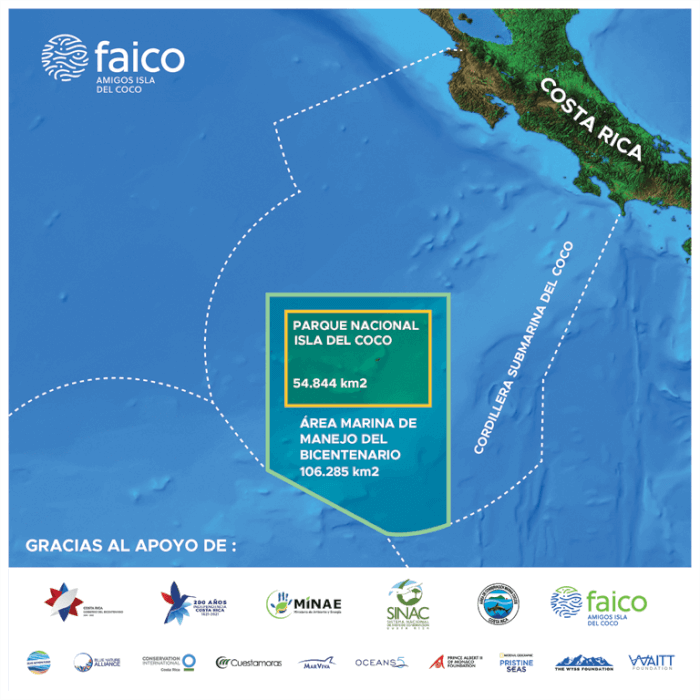 Baseline technical studies used as inputs for the authorities in promoting this proposal are:
Baseline technical studies used as inputs for the authorities in promoting this proposal are:
- Importance of the ecosystems and populations of the site of interest: Cocos Island National Park (CINP), Seamounts Marine Management Area (AMMMS), and adjacent waters.
- Economic assessment of ecosystem services in the Cocos Marine Conservation Area (ACMC) and in adjacent waters
- Estimation of the willingness of visitors to the ACMC and its adjacent waters to pay for the entrance, in addition to current spending, for a possible expansion of the protection of its ecosystems and species.
- Estimation of fishing biomass in the Cocos Marine Conservation Area (ACMC-SINAC) and surrounding waters (AMMMS) and prediction of the probability of some species landing according to bioclimatic conditions.
- Estimation of fishery biomass in the EEZ of Costa Rica and areas of interest within the EEZ.
- Characterization of the longline fleet in Costa Rica.
- Prioritization for zoning of the EEZ of the Pacific of Costa Rica based on conservation objects and uses.
The following summaries were also prepared for each study:
-
- Characterization of the Costa Rican Longline Fishery Fleet.
- Marine Spatial Planning of Costa Rica’s Pacific Exclusive Economic Zone
- Why is it Urgent to Improve the Conservation of Costa Rica’s Pacific Marine Ecosystems?
- Estimation of fish biomass in the exclusive economic zone of the pacific of Costa Rica.
- Scuba diving and fishing in the Cocos Marine Conservation Area and their contribution to the Costa Rican economy.
The consultation and/or dialogue process allowed the development of exploratory sessions, and subsequently, worktables with the different stakeholders, as well as the development of a voluntary public consultation. After this, the final proposal was presented to the Costa Rican Institute of Fisheries and Aquaculture (INCOPESCA), the Regional Council of the Cocos Marine Conservation Area (CORACMC), and the National Council of Conservation Areas (CONAC).
As part of education and awareness-raising efforts for all stages of the project, some communication activities were developed, such as the campaign https://unmundoazulporproteger.com/, and press releases that disclose the importance of the ACMC and associated ecosystems.
In the news section, there is more information about the technical-scientific, social, financial, and legal feasibility process of possible changes and/or modifications of protected wildlife areas of the Cocos Marine Conservation Area.
FAICO, from the beginning, has been a fundamental partner of the project, which was led by the Cocos Marine Conservation Area (ACMC), the National System of Conservation Areas (SINAC), and the Ministry of Environment and Energy (MINAE).
This great achievement allows Costa Rica to join efforts for the attention of national and international country commitments, such as the Sustainable Development Goals (SDGs), the Aichi goals, and the intergovernmental initiative of more than 70 countries, called the High Ambition Coalition, HAC, which is chaired by Costa Rica, France, and the United Kingdom. Under the latter, a global agreement for nature and people has been proposed with the primary goal of protecting at least 30% of the world’s land and ocean area by 2030 (30×30 goal).
Belongs to
the Program:
the Program:


